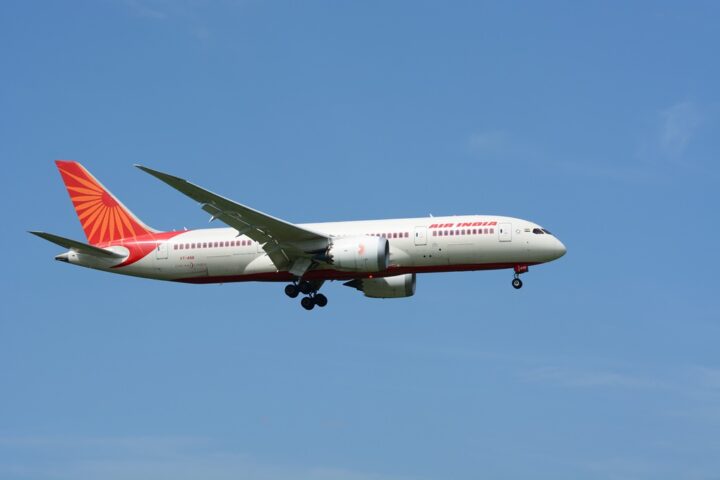In a stark reminder that some things money cannot buy, India’s wealthiest and most powerful residents in Mumbai and Delhi are facing the same toxic air as millions of other citizens. Despite their access to high-end air purifiers and luxury homes, the deteriorating air quality has left even billionaires struggling to breathe.
The Air Quality Crisis
As of November 1, 2024, Delhi topped global pollution rankings according to Swiss firm IQAir, with AQI levels reaching a hazardous 396 at Anand Vihar station. Mumbai’s situation wasn’t much better, with AQI readings hitting 305 in Colaba and multiple areas recording “poor” air quality above 200. The pollution crisis has become so severe that even the most advanced air purification systems struggle to maintain safe indoor air quality.
“The post-Diwali pollution has pushed Delhi’s air quality to severe levels, with PM2.5 and PM10 concentrations soaring well beyond safe limits,” reports the Central Pollution Control Board. The combination of festival fireworks, crop burning, and industrial emissions has created a perfect storm of air pollution that affects everyone regardless of their social status.
When Billions Can’t Buy Fresh Air
Even India’s wealthiest residents, including:
- Mukesh Ambani (net worth nearly $120 billion), residing in Mumbai’s famous Antilia building.
- Savitri Jindal (net worth $43.7 billion), chairperson of O.P. Jindal Group, is located in Delhi.
- Shiv Nadar (net worth $40 billion +), founder of HCL Technologies, resides in Delhi.
- Radhakishan Damani (net worth $31.5 billion+), founder of DMart, lives in Malabar Hill, Mumbai .
All face the same polluted air despite living in luxury homes equipped with state-of-the-art air purification systems. Their wealth provides access to the best available technology, but even these solutions have proven insufficient against the overwhelming pollution levels.
Pollution-linked health issues and associated losses cost India around $150 billion annually, which is nearly 5% of the country’s GDP. For the likes of the billionaires who call Mumbai and Delhi home, their immense wealth offers little protection against the pervasive pollution. While they may retreat to air-purified homes, offices, and cars, the toxic air inevitably seeps into their lives.
A recent Vogue India exclusive sneak peak, showcasing the Ambani family and an intimate tour of their Antilia residence, went viral on social media platforms. One particularly telling image from the feature captured not just the luxury within, but also documented Mumbai’s pressing environmental reality – a thick blanket of smog enveloping the city’s skyline in the background.
Political Power vs Environmental Reality
Key political figures residing in these cities, including:
- Prime Minister Narendra Modi
- Home Minister Amit Shah
- Chief Minister Arvind Kejriwal
- Opposition leader Rahul Gandhi
Despite their influence and authority to implement policies, they too must contend with toxic air levels that exceed World Health Organization safety standards by several times. Fortunately, the PM has a packed schedule with multiple domestic and international visits, providing him a window to escape the Delhi AQI. However, he will be in office sooner or later as the higher air pollution levels continue this winter season, which has just begun.
As per the AQLI 2024 report, Indians now breathe “particulate pollution levels that are 22.3 percent higher than at the turn of the century,” and have the “highest health burden of pollution in South Asia.”
Jeet Mashru, a Multimedia Journalist, says, “The Maharashtra Pollution Control board has gone completely spineless at the hands of private builders across Mumbai Metropolitan Region.” He also mentioned that the BMC, MBMC, police officials, and other government officials “have failed to maintain noise and air pollution guidelines across MMR.” According to Mashru, “Complaints about builders flouting norms are pouring in from other areas of Mumbai as well,” with the video in question being from Mira Road.
The situation demonstrates that environmental challenges require more than individual power or wealth to solve.
The Limits of Indoor Protection
Environmental activist Bhavreen Kandhari warns that due to poor air quality, “Our Children and You Know Our Generation Is going to lose many years close To 12 Years.” She emphasizes that this alarming fact “cannot go unnoticed.” The urgency in her message reflects a need for immediate attention and action.
Even the most sophisticated air purifiers have limitations:
- Cannot fully filter out all harmful chemicals from firecracker smoke.
- Effectiveness decreases as outdoor pollution levels rise.
- Only work in sealed environments.
- Don’t protect during necessary outdoor activities.
- Struggle to handle sudden spikes in pollution levels.
- Require constant maintenance and filter replacements.
- Cannot eliminate all ultrafine particles.
As per the AQLI 2024 report, India’s national AQI standard is similar to China’s and “ only 60 percent of the population breathes air that meets this standard.”
Diwali’s Impact on Air Quality
The festival of lights has further deteriorated the situation:
- Delhi’s AQI reached 330 by 10 pm on Diwali night.
- Mumbai recorded an AQI of 172 the morning after Diwali.
- All monitoring stations in Mumbai showed “poor” air quality.
- PM2.5 levels crossed 145.1 micrograms per cubic meter in Delhi.
- Colaba in Navy Nagar recorded one of the worst AQI in Mumbai.
- Sewri reached 284, while Kandivali hit 252.
- Byculla and Kherwadi recorded levels above 220.
Sumaira Abdulali, activist and initiator of Awaaz Foundation, warned that the brief moments of firework celebrations would have long-lasting consequences. “For a few moments of firework celebrations, we will all be feeling the pollution aftereffects for way too long,” she emphasized, noting how AQI had reached hazardous levels with toxic chemicals and metals lingering in the air. She lamented that “if only the days after could be as happy as the Diwali festivities were.”
The festival’s impact was particularly severe due to widespread violation of firecracker bans, despite enforcement efforts. The chemicals released during celebrations, including heavy metals and toxic compounds, create a complex mixture that indoor air purifiers struggle to filter effectively.
Global Context: World’s Most Polluted Cities
According to IQAir’s rankings:
| Rank | Major City, Country/Region | AQI⁺ US |
| 1 | Delhi, India | 481 |
| 2 | Kolkata, India | 392 |
| 3 | Lahore, Pakistan | 267 |
| 4 | Mumbai, India | 216 |
| 5 | Tashkent, Uzbekistan | 196 |
| 6 | Kampala, Uganda | 182 |
| 7 | Beijing, China | 169 |
| 8 | Hanoi, Vietnam | 167 |
| 9 | Jakarta, Indonesia | 163 |
| 10 | Wuhan, China | 157 |
This global context shows that South Asian cities face particularly severe air quality challenges, with both Delhi and Mumbai ranking among the world’s most polluted urban areas.
Similar Posts
Health Impact Across Social Classes
Dr. Sonam Solanki from INICIO Chest Clinic in Lalbaug reports: “Patients with chronic lung issues or those who have previously experienced breathing problems are now choosing pollution-free destinations during Diwali. Persistent coughs, owing to the poor AQI, often take seven-10 days to resolve.”
“Mumbai hospitals are seeing a rise in cases of fever, cough, cold, and flu-like symptoms, likely due to rising pollution and fluctuating weather. Doctors advise wearing masks and avoiding crowded areas.” noted Lata Mishra, a journalist from Mumbai.
Rina Deshpande, a 37-year-old house-wife from Ghatkopar, told Karmactive, “Since the onset of Covid, we’ve been spending Diwali outside the city after learning that festive pollution triggers respiratory illness in my kids. They have been using masks and nebulisers regularly. I don’t want to take any chances.”
Environmental Solutions Required
Despite enforcement teams and government bans on firecrackers:
- 377 teams deployed in Delhi to enforce restrictions.
- Comprehensive firecracker ban in Delhi for fifth consecutive year.
- BMC revised guidelines for construction sites.
- Installation of sensor-based monitoring systems at construction sites.
- Enhanced monitoring of industrial emissions.
- Implementation of dust control measures at construction sites.
- Deployment of water sprinklers in high-pollution areas.
Yet the air quality continues to worsen, proving that individual wealth or political power alone cannot solve this environmental crisis. Only systematic change and strict policy implementation can address this public health emergency affecting all residents, regardless of their social or economic status.
The situation in Mumbai and Delhi serves as a powerful reminder that environmental challenges require collective action and systemic solutions. Even the most privileged members of society cannot escape the consequences of deteriorating air quality, making it clear that addressing pollution must become a priority for all stakeholders, regardless of their social or economic status.


















